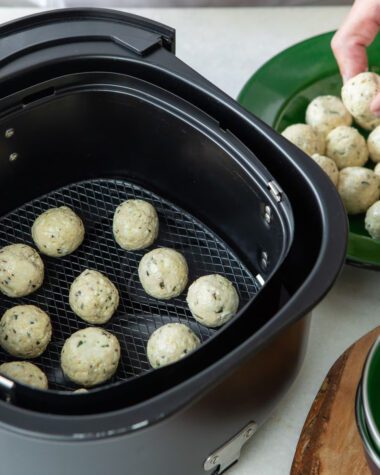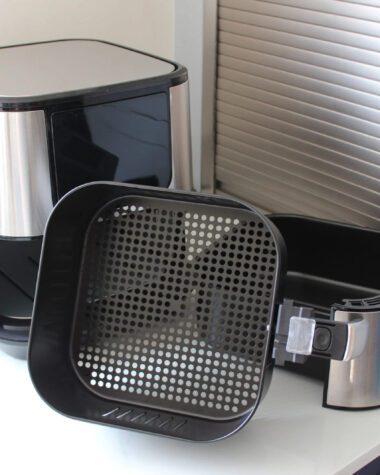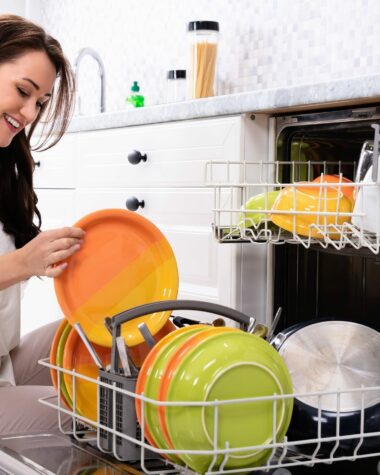Meat processing is an intricate sector involving multiple stages requiring the right refrigeration to ensure both safety and quality. Refrigeration in meat processing contributes to controlling the progression of harmful growth of bacteria and reduces the likelihood of meat degradation.
In this article, we here at DaDongNY will go over the necessity of refrigeration in the meat processing industry and various kinds of refrigeration systems used by various meat processing industries.
A Quick Overview Of Meat Processing
Meat processing refers to the procedures used to turn raw meat into safe, delicious, and long-lasting products. This industry consists of several stages, including slaughtering, cutting, packaging, and other processing methods, including curing, smoking, and cooking.
The primary objective of processing the meat is to create premium goods that satisfy consumer demand while complying with strict food safety regulations. Meat processing is an important sector as it supplies an extensive amount of protein for consumption while contributing to the global food supply.
Refrigeration’s Role In The Meat Processing Industry
As previously stated, meat processing involves several steps during which the meat is at risk of infection from harmful microbes. Proper refrigeration helps in preventing the growth of bacteria and the prevention of meat degradation.
- Slaughtering
During the slaughtering stage, the animal’s body becomes exposed to the ambient environment in which microorganisms from the surrounding area can contaminate the meat. Proper meat refrigeration will assist in preventing the development of bacteria and keeps the meat from degrading.
- Cutting, Deboning, And Trimming
After slaughter, the meat goes through several processing stages involving cutting, deboning, and trimming. In this stage, heat can be produced, which could accelerate bacterial development. Proper meat chilling helps to reduce the temperature and limit bacterial growth.
- Refrigeration
Immediately following processing, the meat gets packed and stored. Proper cooling during storage contributes to the preservation of meat quality and safety. The internal temperature should be kept at 40 °F or below, limiting the growth of bacteria without freezing the meat.
Refrigeration is additionally used to increase the lifespan of meat products. Meats could be kept fresher for longer by regulating the temperature and avoiding the growth of unwanted germs. This benefits consumers and producers by lowering food waste and boosting revenue.
Pros And Cons Of Using Refrigeration In The Meat Processing Industry
Pros
Refrigerators provide the most efficient methods of food preservation for meat processing industries. With this, they can regulate the temperature depending on their needs for a longer amount of time. Here are some of the advantages of refrigeration systems:
- Guarantees Food Safety
One of the most noteworthy advantages of having a refrigeration system in the meat processing industry is how it assists in ensuring food safety. Refrigeration slows the growth of pathogenic germs like Salmonella and E. coli, which may result in foodborne illness.
Refrigeration eliminates the risk of meats becoming spoiled and extends their lifespan, making them safe for consumption by properly regulating the temperature.
- Enhances Quality
Refrigeration also helps preserve the meat’s quality. Keeping meat at the right temperature diminishes its decomposition process and preserves the meat’s look, feel, and taste. This guarantees that consumers will get high-quality, fresh, and flavorful meat products.
- Boost Efficiency
Another perk of having refrigeration in meat processing is improving its efficiency. Blast chillers and walk-in coolers make it possible to cool and store meat products effectively, saving time and reducing the likelihood of contamination.
Furthermore, refrigeration systems are designed to keep temperatures even, avoiding the necessity for constant monitoring and modification of thermostats.
- Provides Processing Versatility
Refrigeration also provides greater processing options. By regulating the meat’s temperature, processors can postpone processing until the right moment or change the temperature to suit particular processing methods. This contributes to meat products getting processed most effectively and efficiently as possible.
Cons
Aside from the numerous advantages, refrigeration also has a couple of disadvantages for the meat processing industries. They are as follows:
- High Energy Expenses
The substantial energy cost linked to operating refrigerated systems is just one of the key disadvantages of refrigeration in this industry. Refrigeration requires enormous power to maintain the appropriate temperatures, leading to expensive electricity prices. Refrigeration systems’ consumption of energy can also bring harmful effects to the environment.
- Costs Of Upkeep And Repair
Refrigeration systems require regular repairs and maintenance to ensure that they work normally. But since maintenance and repairs are not cheap, this can add significantly to the overall expense of meat processing.
- Needs Skilled Labor
Refrigeration systems require the assistance of a license to manage and care for them. This can raise meat processing expenditures since technicians need specialized training and skills to keep the refrigeration systems working effectively.
- Risk of Equipment Failure
Refrigeration systems, like any kind of equipment, are susceptible to malfunction. A refrigeration system failure can significantly influence meat processing, resulting in spoilage and contamination.
Refrigeration Systems In The Meat Processing Industry
Several refrigeration systems have been used throughout the meat processing industry. The most common ones include blast chillers, walk-in coolers, and freezers. Let’s take a closer look at these refrigeration units.
Blast chillers can be used to cool cooked or raw meat rapidly. They operate by blasting frigid air into the meat, causing it to cool. Blast chillers are often used in meat processing industries to effortlessly and evenly cool huge quantities of meat.
Walk-in coolers are huge chilling devices that keep meat products from 32 °F to 55 °F. Raw meat items such as beef, pork, and poultry are frequently kept in this refrigerator. The interior temperature inside the walk-in cooler is regulated via a thermostat and its humidity level.
Commercial freezers are used to improve the longevity of meat products. They simply extract heat from the meat, lower the temperature, and freeze it. These freezers are commonly used to keep meat products, such as poultry, pork, and beef, fresh for an extended period.
FAQs
- How Does Refrigeration Keep Harmful Bacteria At Bay In Meat?
A Refrigeration unit reduces the temperature and produces a safe space in which hazardous bacteria cannot thrive. It reduces their development rate, preventing spoilage and ensuring the meat’s safety. Refrigeration also lowers the level of enzymes, which could contribute to meat deterioration.
- Can You Freeze Meat Once It Has Been Thawed?
Refreezing meat once it has been thawed is usually not advised, as it can cause safety and quality concerns. When meat is defrosted, the remaining moisture will create an environment favorable for bacteria to thrive. Nevertheless, if the meat has been thawed in the refrigerator and kept at an optimum temperature of 41 °F or lower before cooking, it can be refrozen.
This May Also Interest You: A Comprehensive Guide On How To Properly Defrost Your Samsung Refrigerator
- What Effect Does Refrigeration Have On The Flavor As Well As The Texture Of Meat Products?
A refrigeration unit sustains meat texture and flavor by decreasing protein breakdown, retaining softness, and preventing spoilage. Insufficient refrigeration or over-chilling, on the other hand, could result in flavor and texture degradation. During manufacturing and storage, humidity and temperature must be constantly monitored.
- What Precautions Are Taken To Assure The Quality And Safety Of Meat When It Is Being Transported And Stored?
Several precautions can be taken to ensure the quality and safety of meat products throughout the transport and storage process, including:
- Temperature control and refrigeration.
- Sanitation and cleaning of storage premises and machinery regularly.
- Using correct packaging materials.
- Regular testing and monitoring of meat products for quality and safety.
Bottomline
Refrigeration plays a significant role in the meat processing industry because it helps guarantee meat products’ safety and superior quality. Refrigeration also helps prolong the lifespan of products, minimize waste, and enhance accessibility by delaying the inevitability of deterioration and bacteria growth.
However, refrigeration presents its own issues, such as high energy and maintenance costs. Despite such disadvantages, meat manufacturers rely heavily on refrigeration up to this day.
To learn more about refrigerators and how this valuable piece of equipment chills the food and beverages inside, including your breast milk, check out the post here.
Articles You May Be Interested In
- A Cooler Choice: Whirlpool v.s GE Refrigerators (Full Guide)
- Refrigerator Check: LG v.s Samsung Refrigerators (Full Guide)
- Cool Tech Showdown: Frigidaire v.s Whirlpool Refrigerators (Full Guide)
- Fridge Favorites: Bosch v.s LG Refrigerators (Full Guide)
- Cooling Conundrum: Whirlpool v.s Samsung Refrigerators (Full Guide)
- Tale Of The Tape: Maytag v.s Whirlpool Refrigerators (Full Guide)
- Fridges in Focus: Thermador v.s Sub-Zero Refrigerators (Full Guide)
- Fridge Frenzy: Sub-Zero v.s Viking Refrigerators (Full Guide)
- The Big Chill: Whirlpool v.s KitchenAid Refrigerators (Full Guide)
- Refrigerator Bout: Whirlpool v.s LG Refrigerators (Full Guide)









